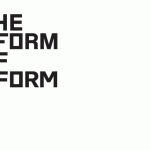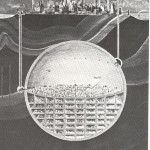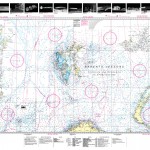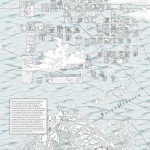Starting in the summer of 1973, artist Gordon Matta-Clark purchased fifteen lots in the city of New York, fourteen in Queens and one in Staten Island. The specificity of these plots is to be tiny residual areas, often inaccessible parcels of land escaped for some reasons to the rules of the grid and the interests of the real estates. These “unuseless” spaces, sometimes even narrower than a person’s shoulders, were publicly auctioned by the city of New York for a price ranging between $25 and $75 each. Matta Clark’s collection of untenable properties included a triangular plot, a tiny strip of land between two houses, a curbsite. It was a catalogue of bits of land probably resulting from surveying errors or zoning oddities.
The artist probably didn’t have a specific purpose in his mind when he purchased the odd lots and he just started documenting them. He mapped, measured (when possible), photographed, catalogued and analyzed his fifteen properties. While documenting the irrationalities of a city, he basically questioned the meaning and value of land property, using these anomalies in the map to reveal its contradictions.
“They were a group of fifteen micro-parcels of land in Queens, left-over properties from an architect’s drawing. One or two of the prize ones were a foot strip down somebody’s driveway and a foot of sidewalk. And the others were curbstone and gutter space. What I basically wanted to do was to designate spaces that wouldn’t be seen and certainly not occupied.”
As Rosalind Krauss and Yve-Alain Bois point out in their essay “Formless” (Zone Books – 1997, from page 226): (the spaces) “wouldn’t be seen”, not so much because they were inaccessible (although this was true in some case), but because they had no use value whatsoever and only a purely nominal exchange value: these are fake commodities, fake real estate properties” (the title of the work, perhaps the most conceptual piece Matta Clark ever did, is Reality Propenies: Fake Estates (1973), which puns on the fact that reality is an archaic term for real estate). The parcels did not interest Matta-Clark unless they had no economic value whatever”.
Video artist and cable television pioneer Jaime Davidovich, documented Matta-Clark as he visited one of the sites in Queens in a recently discovered footage.
After the artist’s death in 1978, the micro properties were reclaimed by the city due to the impayment of local taxes. In 2003 the editors of Cabinet commissioned several artist to start from Matta-Clark’s “Fake Estates” to imagine a series of projects related to property. The resulting project is called “Odd Lots“.
Click on the first three images to enlarge.







Leave a Reply